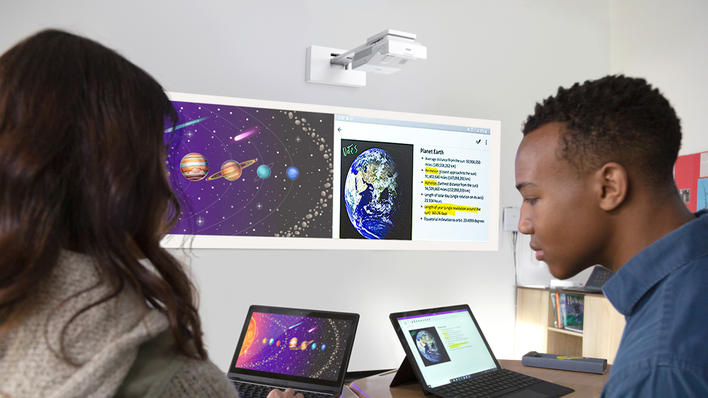The Herculean pivot that occurred in higher education in the spring of 2020 required technology — at its very core — to facilitate all business. While the fear deep within technology leaders — not unlike the entire world — was tied to the unknown, for many it surely felt eerily familiar.
The pivot itself was very much like the old hat task of testing a disaster recovery and business continuity plan. However, in the case of last spring, there was zero room for any piece of that plan not to work. Success was a requirement. Immediately; and, in some instances, overnight.
That said, we now know pieces in fact didn’t work. So, rather than toil, we remedied gaps, stood up new technologies, ramped up services and continuously improved for tomorrow’s needs, and the day after that, and so on.
To date, we’ve survived spring 2020, improved over summer 2020 and, as a result, here’s to hoping most IT shops rocked the fall of 2020.
Next up? For the spring 2021 semester, thankfully the technology promises to remain mostly the same: a strong core (infrastructure, systems and wifi), collaboration tools (email, telephony, messaging, video), learning management systems, accessible software, classroom technology (lecture capture, hybrid delivery), tracking (personal safety, emergency response, Covid-19 reporting), contactless services (mobile ordering, door entry, process automations) and robust business systems (automations, security, workflow management).
As IT leadership, however, we know the challenges are rarely about the technology itself. What should we be thinking about in anticipation of spring 2021 in higher education? The answer appears to be a nice mélange of old challenges, each with a daunting new twist.
Onslaught of new devices
‘Tis the season in IT to recognize that the new year will come laden with a barrage of new technology devices. The first couple of weeks managing new gadgets is always a bear. While connecting new devices is hardly a fresh challenge on any college campus, the immediacy dial has been turned all the way up given the virtual nature of life and instruction.
In addition, IT support used to be able to prioritize devices; focusing first on computing tech, and then folding in the “fun” stuff later. Covid-19 has put an end to that. All devices are top priority now.
Our students living on campus, during this pandemic, already feel isolated and disconnected. If gaming systems, wifi-ready televisions and Echo Dots bring even one bit of joy and connectedness, we will prioritize them all as urgent.
A drive for business as usual
In order to compete mid- and post-pandemic, universities are flexing differentiating muscle, while, at the same time, tightening financial belts. This translates into a variety of efforts focused on elevating academic efforts — research, marketing, reimagining interdisciplinary programs — that will all rely in some way on technology.
New secure network connections and environments, pop-up website shops and seamlessly connecting curriculum dots will all need to be created, accessible and learnable by faculty and students alike.
In addition to academic efforts, administrative work will be mid-flight in the spring based on endless lessons learned over the past year. Automation improvements, business system integrations and gap technologies are moving from acquisition-to-implementation phases as comprehensive campus process and procedure reviews wind down. We’ve learned so much.
Clear expectations will be set for technology leaders that feel very much like business as usual. The reactive times, though absolutely justified, are behind us. We’ve been the glue, now we need to switch that gear back to forward-thinking and long-term effectiveness.
While we should never pretend that we won’t be here again, crisis-response simply needs to be folded into planning now. Build and develop for a standard world, a fully remote world and — like today’s reality — everything in between.
We all know that if we haven’t been designing for these realities all along, we certainly are now.
Technology exhaustion and pushback
Watch for frustration. And pushback. And high emotions. With vaccines now being delivered, students, faculty and staff are feeling hope and impending normalcy for the first time in months. The spring semester will bring us a slew of exhausted human beings, annoyed by technology and eager to do the things the way they did them a year ago. We’re not there yet.
While maintaining virtual requirements, users will push back with “why?” Planning for future semesters will include “back to the way we’ve always done it” speech and, if we are dedicated to improvement, we need to recognize the positives that came from today’s pandemic realities.
In the face of Covid-19, students now have more options, staff have experienced better work/life balance, faculty played with new classroom technologies and raved about the experience. Of course these examples don’t encompass the experience for all, but the new options were received as positives by many. Imagine if we keep those options available during non-pandemic times. Be the headwind if needed to ensure we don’t lose what we’ve gained.
The transition is coming
While higher education technology teams ultimately flipped a giant switch to go remote in spring 2020, spring 2021 is the time to begin planning for the future state. This will require time, thought and input from the entire campus. In addition, there could be one-to-many forks in our future path and, as chief information officers and technology leaders, we are skilled at ideating and finalizing plans for a multi-level forecast.
Technology leaders need to start thinking about all the “what’s next” scenarios sooner rather than later. Mapping out possibilities is a first step.
Bottom line
Spring 2021 in higher education will be a tough semester. The months will involve change, anticipation and, likely, the straddling of mid- and post-pandemic worlds. However, the oft second definition of education is, “an enlightening experience.” And what better industry to swirl around in than higher education where we continue to battle issues with grace, resilience, hope and utter determination.
So much to expect in spring 2021; all of which higher ed technology teams should lean into and tackle with gusto.
This article was written by Paige Francis from Forbes and was legally licensed through the Industry Dive publisher network. Please direct all licensing questions to legal@industrydive.com.
![]()



